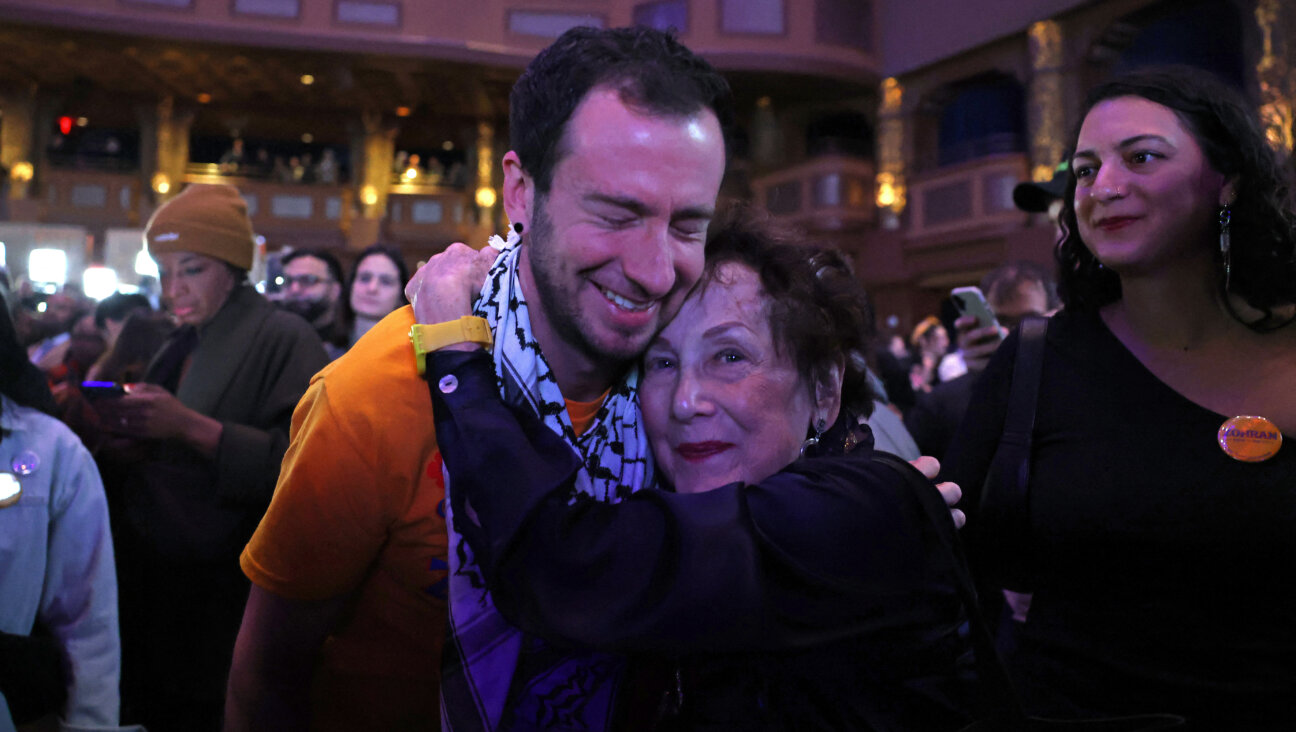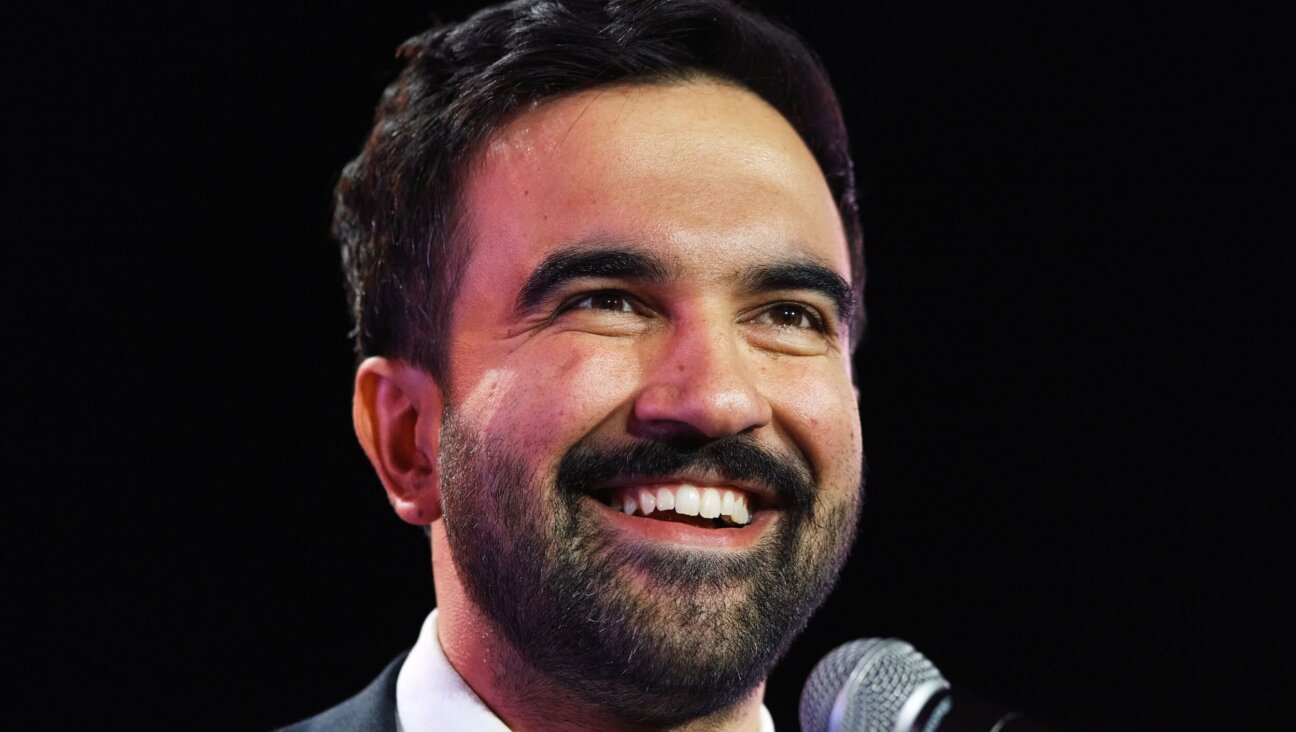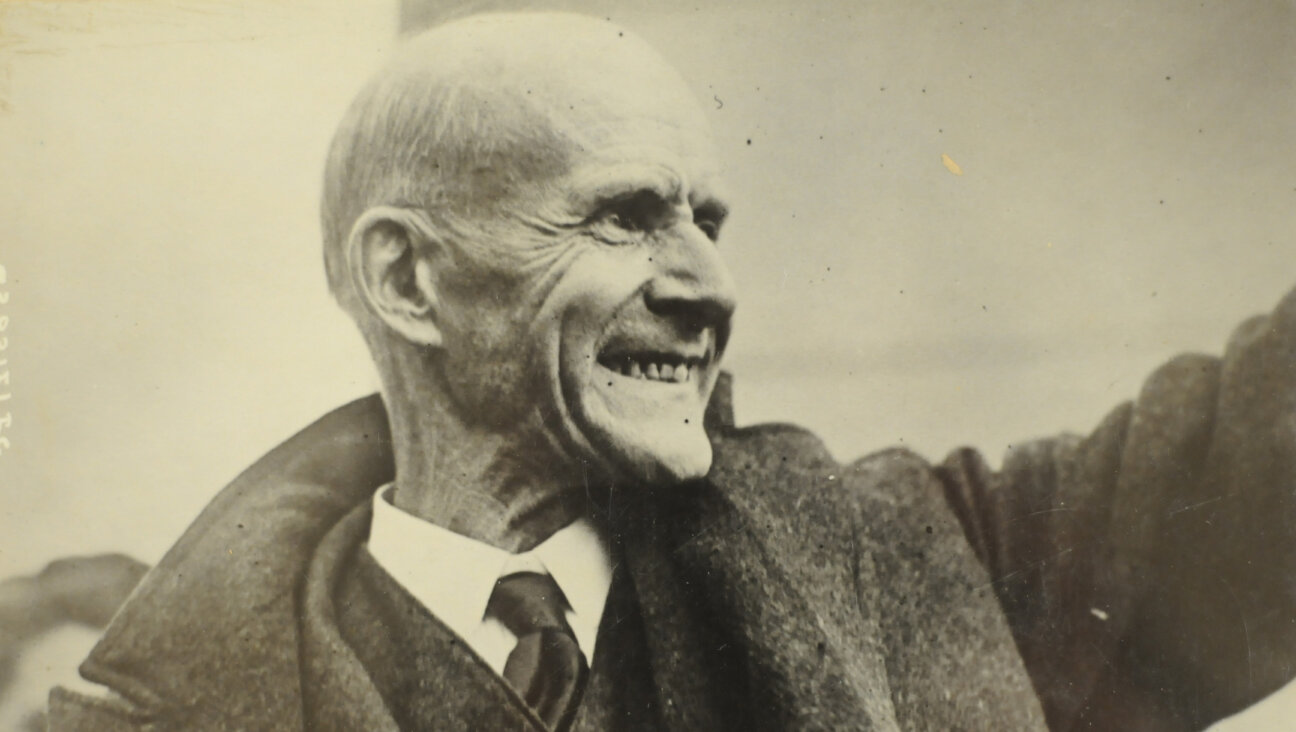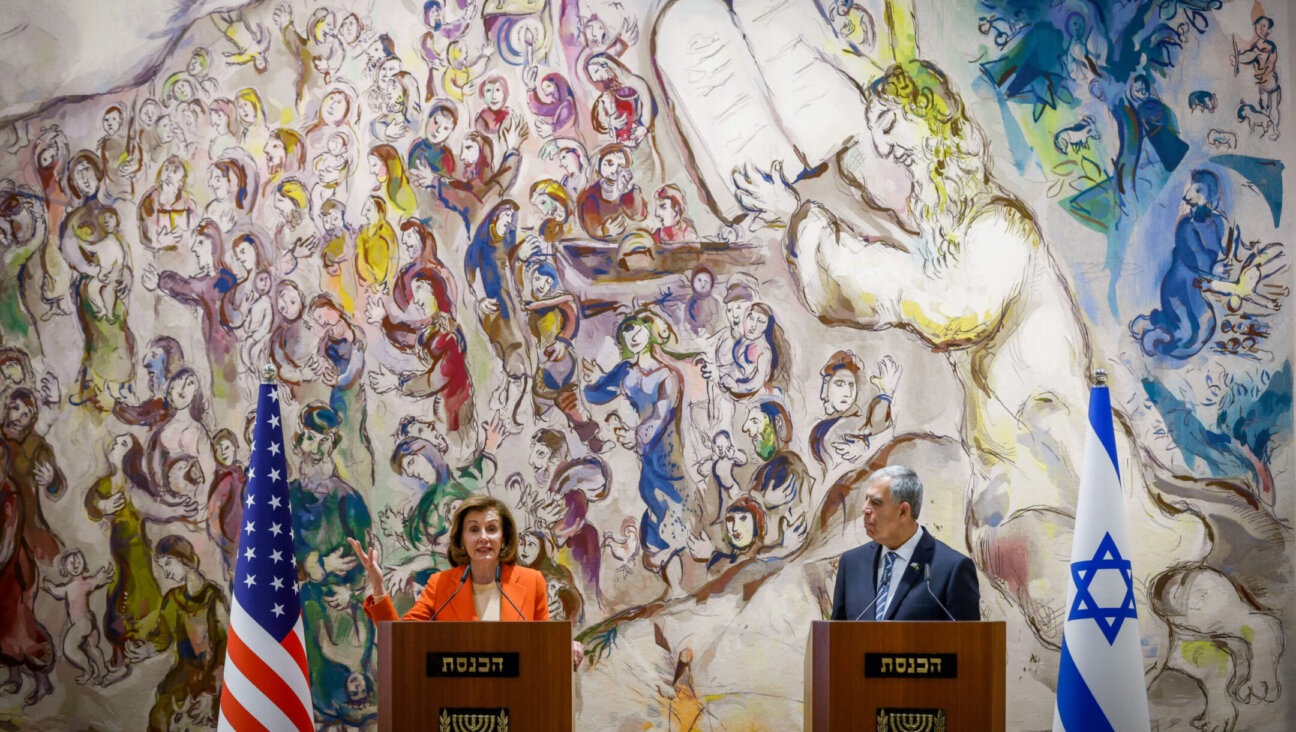At the South Pole, The Sabbath Is Welcome Even When the Sun Shines

Graphic by Angelie Zaslavsky

Image by CHAZ FIRESTONE
In a small chapel overlooking a frozen sea inlet, Dick Heyman leads a tiny congregation in a Sabbath-evening service.

A Reminder of Home: Dick Heyman leads what is believed to be the first Sabbath service in Antarctica. Image by CHAZ FIRESTONE
“Blessed are you, endless one, who makes the evenings fall,” he says, opening the Ma’ariv service with an English rendition of the prayer Asher Bidvaro.
“Oh, wait,” Heyman says, pausing. “We can’t say that here.”
Heyman is right. This January 8 Sabbath service — the first ever in Antarctica to the knowledge of anyone present — is taking place in a dimly lit chapel. But it’s bright as day outside, and it has been that way for nearly half a year.
Here, on the McMurdo Sound near the Antarctic coast, the last sunrise was in August, and the sun won’t dip below the horizon again until late February. Few things are black or white, but Antarctica is one of them: Save for a brief transition in March, the continent enjoys either 24-hour darkness or 24-hour light.
The stubborn sun presents some secular challenges to the scientists and staff here: Sunglasses are a must, even at midnight. But the odd solar schedule may also have implications for the Sabbath, the timing of which is determined by the coming and going of the sun and stars.
“Part of lighting Shabbat candles is to have light in the darkness,” Heyman explains to his congregants. “But we don’t have darkness until February.”
In this multipurpose chapel, a small hodgepodge of staff members, Jewish and non-Jewish, the clearly attentive and the idly curious, including two Christian chaplains, listen respectfully to Heyman. At McMurdo Station, a research outpost that ranks as the largest community in Antarctica, with about 1,100 summertime residents, he is effectively the leader and teacher for this service.
Heyman, 64, a child of German Holocaust refugees, grew up a Reform Jew in the Forest Hills section of Queens. In Antarctica, he works 50-hour weeks as a network engineer, connecting the remote base to the rest of the world. He has been in information technology for 25 years, but this is his first season on the ice. His four-month stint is the longest he has been away from his family of four in Fort Collins, Colo. So, though he is not especially religious and recalls that he had his bar mitzvah in a Presbyterian church, Heyman decided to hold a Sabbath service to remind him of home.
With the help of rabbis from Congregation Har Shalom in Fort Collins, Heyman printed out prayer booklets, planned an oneg — an informal Friday night Sabbath service — and baked a challah for the occasion. Heyman estimates that there are upward of 20 Jews on the base, but only eight congregants besides himself have shown up to enjoy the festivities, plus myself, a nonparticipating reporter. Only six participants are Jewish. The others, including the two Christian chaplains, are among the curious.
“I’m from the Judeo-Christian tradition,” said the Rev. Philip Gibbs, 62, a New Zealander. “So when something Jewish is going on, I want to see it.”
Even some of the Jews present admit to little in the way of Jewish background, leading Heyman to punctuate the service with frequent commentary and explanation as he moves along.
As it turns out, Heyman is not the first to ponder the problem of the Sabbath in the face of a nonsetting sun. In the 18th century, the Vilna Gaon suggested that ambiguous cases like Heyman’s should follow the solar calendar of Jerusalem, a proposal accepted today as law. But according to Rabbi Michael Paley, scholar-in-residence at the Jewish Resource Center of UJA-Federation of New York, the law extends only to land masses contiguous with Israel, making Antarctica something of a halachic no man’s land.
When the situation is uncertain, Paley explained, the precise timing of the Sabbath could become a community decision. Fortunately, Paley’s psak, or ruling, is consistent with Heyman’s intuitions.
“There’s never been a Jewish pope,” Heyman says. “So there can be some interpretation.”
The engineer-cum-hazan decides to follow a custom of referring to the sundown of the nearest community — in this case, the ironically named Christchurch, New Zealand. Christchurch is home to the nearest off-continent base of the United States Antarctic Program, and McMurdo Station runs on Christchurch time (+12 hours GMT), allowing Ma’ariv to begin around dinnertime instead of 10 hours later, as it would on Jerusalem time (+2 hours GMT).
But as soon as one problem is solved, another arises. Following the custom of facing toward Jerusalem to pray, Heyman instinctively instructs his congregation to turn East, as do Jews who live in the West.
“Grid East or True East?” Philip Fitzgerald asks.
The 33-year-old carpenter and Jew from Juneau, Alaska, has a point. At McMurdo, a few hundred miles from the geographic South Pole, cardinal directions are skewed. Almost everywhere one turns is geographically north. This has led navigators to develop an artificial “grid” system for designating directions in Antarctica. For someone standing at or near the South Pole, “Grid North” is defined as facing in the direction that aligns with the Prime Meridian — the longitudinal line that passes through the Royal Observatory in Greenwich, England. “Grid South” aligns with the International Date Line, running through the opposite side of the globe, in the Pacific Ocean.
“Grid East” passes through Bangladesh between India and the Gobi Desert, and bears no relation to Jerusalem. But neither does True East, which simply makes a short lap around the South Pole before looping back to McMurdo.
So where to face? Heyman and his congregation settle on True East, concluding that thinking of Jerusalem is what counts.
Paley thinks they could have found Jerusalem on a map and simply faced that way. “But the world is round,” he said. “Eventually you’ll get there.”
For Heyman, the spirit of his Sabbath service trumps the details: During Kiddush, accompanying the challah and wine are some tasty (if untimely) latkes, made from roasted potatoes he had been hoarding from the cafeteria.
For Kenneth Iserson, 60, the sight of the Sabbath candles brings him back to his Conservative Jewish upbringing outside Washington. Now professor emeritus at the University of Arizona, Iserson came to Antarctica to serve as the lead physician on the research base.
“Those are the first candles I’ve seen lit at McMurdo,” he says.
Heyman says he doesn’t know if another Antarctic Sabbath service is on the horizon. But if he does hold the service again, he says he’ll take extra care to scour the base for more congregants.
“I’m happy with the turnout,” Heyman says. “But there have got to be more than six Jews in Antarctica.”
Contact Chaz Firestone at [email protected]
















